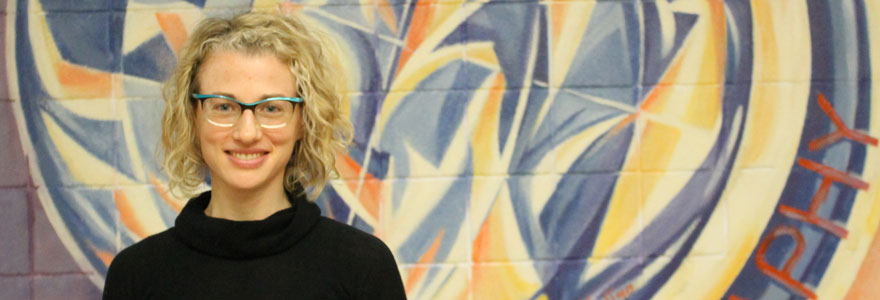News and Updates
Contact
Faculty of Social Science
Social Science Centre
Room 9438
Western University
T. 519-661-2053
F. 519-661-3868
E. social-science@uwo.ca
Gender and the gym
November 21, 2017
Are there typically masculine or feminine activities in a gym? Is weight-training only for men? And cardio only for women? Or is it more complex?
Stephanie Coen, a postdoctoral associate in the Department of Geography, examined how activities and spaces within gyms become gendered. Her article, “It’s gym, like g-y-m, not J-i-m”: Exploring the role of place in the gendering of physical activity” was published in Social Science & Medicine. She asks, what happens on the gym floor that includes or excludes people from participating in the full range of potential physical activity opportunities?
In her study, participants reported feeling intimidated when trying to use certain spaces or equipment. Many participants felt they could or could not do specific exercises because they were viewed as ‘not normal’ for their gender, such as intensive weight training for women, or stretching and cardio for men.
Coen found that for many gym users, men and women alike, the presence of people perceived to express a particular masculine image could impact how comfortable they felt while using the gym.
Coen was interested in gyms because they are viewed as everyday places, and she wanted to “look at environments and how they can be implicated in shaping gendered behaviour.” Coen argues that remedying gender disparities in physical activity requires examining the places where such differences may become routinized and taken-for-granted.
As women are less likely to meet the minimum levels of physical activity recommended in Canadian guidelines, it is important to consider why people may not feel welcome or comfortable in common spaces like gyms.
“We talk a lot about just getting people more active, but we have to talk about creating more equitable opportunities,” said Coen. “If you just focus on activity, inequality may still persist and people may miss out.”
Making gyms more inclusive places requires re-defining the gender relations governing use of gym space to benefit everyone involved, while taking care not to inadvertently exclude some people or some gender expressions, Coen said. This could include drawing attention to commonalities and shared experiences among women and men, or even reconsidering the conventional layout of gyms to intersperse traditionally gendered activities throughout the gym.
For her next research project, Coen intends to focus on the role of different everyday environments (e.g., around home, neighbourhood, school) in how physical activity participation becomes gendered among youth.
“Girls’ physical activity tends to drop off during adolescence,” said Coen. “I want to engage youth to talk about how they think gender matters in terms of physical activity.”
Other research shows that boys and girls use areas of play differently, especially as it relates to structured and unstructured play. Coen intends her study to be highly participatory, asking youth how they think about gender, and using creative methods, such as co-created comics and collage, to create a dialogue to explore their views.
Coen said she “uses creative expression as it allows people to approach or answer a question in another way. Things like gender roles can become so accepted that it can be difficult to see unless you step back.”
As a postdoctoral associate, Coen is working for the Human Environments Analysis Laboratory (the HEAL), under the direction of Professor Jason Gilliland.
Coen said she enjoys working in the HEAL, because “it’s able to bring a lot of different types of research together under the same umbrella.” Through her role, she has been able to collaborate on a variety of projects and “see a lot of different perspectives.”

